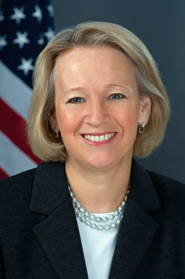The Securities and Exchange Commission is likely to get tougher with sponsored access arrangements that allow firms to access the markets directly.

SEC Chairman Mary Schapiro said she has asked her staff to develop a sponsored access rule proposal. This comes even as the SEC has been working with Nasdaq OMX Group to devise a broader rule concerning direct access to its market for nearly a year.
Any rule proposal approved for Nasdaq would be copied by other exchanges and implemented in their markets to prevent different treatment of direct access arrangements by different market centers. Nasdaq submitted a 54-page amendment to its rule proposal on Oct. 19.
Schapiro stressed the Commission’s urgency in coming up with a sponsored access proposal that would be rigorous and effective enough to deal with high-frequency trading firms and others using sponsored access arrangements to reach the markets. "I recognize some markets have been seeking to address this issue, but I also worry that competitive pressures could delay an effective solution–one that would apply across all markets to assure a level playing field for all investors," Schapiro said. She spoke today before several hundred industry professionals at the Securities Industry and Financial Markets Association’s annual conference, in New York.
Nasdaq last January proposed a rule concerning the methods used by both brokers and non-brokers to gain access to the markets through a broker-dealer’s membership. Many market participants use direct market access through brokers to reach exchanges and electronic communication networks. However, a segment of those getting "sponsored access" has elicited concerns in the industry.
While sponsored access refers to firms accessing exchanges directly, typically through their own pipes and technology, "unfiltered" access is sponsored access that omits the pre-trade risk checks that would otherwise be implemented on that flow. This type of unfiltered access is used to shave off microseconds in sending orders to an exchange’s servers.
Schapiro’s comments could signal a new or altered approach to sponsored access, Richard Ketchum, CEO of the Financial Industry Regulatory Authority, told Traders Magazine. The gist of Schapiro’s comments, he said, is that "this may need to be a Commission rule," rather than one proposed by the exchanges.
It is also possible that the SEC is upping the pressure on Nasdaq and other exchanges to produce a rule proposal that deals vigorously with the risk issues on the SEC’s radar. Alternately, the SEC could impose a sponsored access rule on top of any rule approved for Nasdaq and other market centers.
Nasdaq said it is working with the SEC on its rule proposal. "Nasdaq OMX is the only market that has proposed rules regarding the regulation of sponsored access, and those rules are pending before the SEC," a Nasdaq spokesman told Traders Magazine. "We believe regulation is needed and that rules in this area can only be effective if they are applied consistently across markets."
Schapiro noted that the SEC’s sponsored access proposal "will focus on arrangements that enable unfiltered access by non-regulated entities–in many cases, high-frequency traders–to exchange systems." She compared sponsored access to exchanges to "giving the car keys to a friend who doesn’t have a license and letting him drive unaccompanied."
Schapiro stressed that the risks associated with unfiltered access should not be ignored or downplayed. "We should not sacrifice the stability and fairness of the markets to give a trader a millisecond advantage," she said. Ensuring that broker-dealers offering sponsored access run the appropriate risk checks on their clients’ flow is important, she said, because brokers "perform functions that are vital to maintaining the integrity of the markets."
In addition to sponsored access, the SEC is also stepping up its focus on dark liquidity and on broader market structure issues. The SEC, as part of a planned concept release, due out later this year, will look at "dark liquidity in all its forms, including dark pool alternative trading systems, internalization, dark order types on exchanges, and ECNs," Schapiro said at the SIFMA conference. The concept release could lead to rule changes down the road.
Schapiro said she has asked Commission staff "to review rules of [alternative trading systems] to assess whether those rules are still appropriate for all the different types of ATSs that exist today, many of which were not foreseeable when the rule was adopted 10 years ago." Regulation ATS was adopted in 1998 and went into effect the following year. Alternative trading systems include dark pools and electronic communications networks. There are about 30 equities dark pools registered with the SEC today up from a dozen five or six years ago.
In recent months, NYSE Euronext and Nasdaq OMX Group executives have stressed repeatedly that their exchanges operate on an uneven playing field compared with dark pools and ECNs, which do not go through the same rule filing process they do. NYSE Euronext has also argued that market surveillance costs currently borne by the exchanges should, instead, be paid for on a pro rata basis by alternative markets as well.
The SEC’s focus on dark liquidity will be part of a "deliberate and comprehensive review of market structure," according to Schapiro. This overview will also seek industry and public input on "high-frequency trading and the wide range of strategies that may fall within this vaguely defined category," Schapiro said.
Another topic in the SEC’s sites is co-location. Schapiro said co-location could result in advantages to those market participants "for whom speed is of the essence." She added that the SEC intends to ensure that "exchanges offer co-location services on terms that are fair and non-discriminatory and that are transparent to the public." Co-location refers to the placement of a firm’s servers near a market center’s matching engine.




